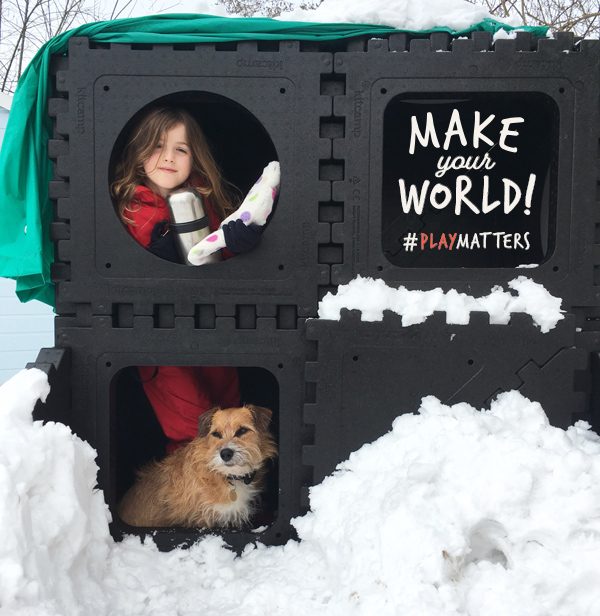The Importance of Den Building

Making dens is a serious business in my household: barely a day passes without sofa cushions and blankets being rearranged into a den! We live in a flat with no outside space to call our own. Despite park trips and sports clubs, there remains plenty of energy, so in the absence of a garden our inside space doubles up as our ‘wild’ play space! Den-making is our family’s number one favourite activity and has reached another level since the arrival of Kitcamp.
Den-making is a classic rainy day event, as well as a way to create a special space outdoors. Sadly, it seems dens have become less appealing and accessible due to fewer suitable outdoor spaces and digital distractions. Den-making is construction at play, a STEM project. Den-building encourages:
- Creativity and creative thinking
- Physical development
- Independent learning
- Problem-solving
- Perseverance
- Role-play and imaginary play
- Fun!
Why is den-making such a particular part of childhood?
Maria Kylin [1] found that dens let children transform their environment into a meaningful place, counter to adult-designed urban spaces around them. Dens are built from the child’s perspective (without adults’ constraints such as tidiness) and offer a spatial boundary between the child and the rest of the world. They are meeting places where invited friends enjoy shared interests. For teenagers, dens provide a space to ‘rehearse adult life’. With age, dens progress from being built around a ‘found place’ (e.g. sofa, table or bush), to being more self-built, less visible and with a defined boundary.
A shelter from the world outside
I love the idea of children having their own space to be, to feel secure and to be lost in thought. What a simple way of gifting ‘me’ time to children. The den as a ‘designated space’ offering privacy and a sense of control links with the ideas of French philosopher, Gaston Bachelard. He wrote about the essential human need for secret spaces to withdraw to because they shelter ‘daydreaming’. It puts a different slant on Maslow’s Hierarchy of Needs, where shelter (safety and security) comes second only to the Basic Needs of food, water, air and rest.
How to encourage den building
We need to make spaces available, both inside and out, for den building. It may involve handing over a corner of the playground, a cluster of trees, or a part of the landing. Also, we need to provide and allow access to suitable den building materials. I have had to relax my attitude to the sofa cushions being reassigned and bamboo canes being inside, as well as investing in giant clothes pegs! Lastly, and most importantly, the child must be the architect of the structure, tempting as it is to voice our opinion and turn foreman. Our role is to facilitate with a supply of materials and the odd bit of help (if asked!). The whole point of the den is that it is private; provide resources and step back!
References
Resources
See Kitcamp’s “I am a Den Builder” toolkit for inspirational den building as a team project, a STEM activity incorporating design techniques and logistics, and the PSHE and social aspects of the need for shelter and refuge.

